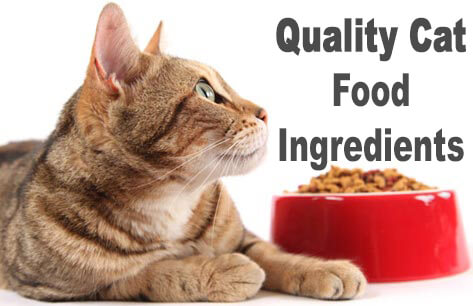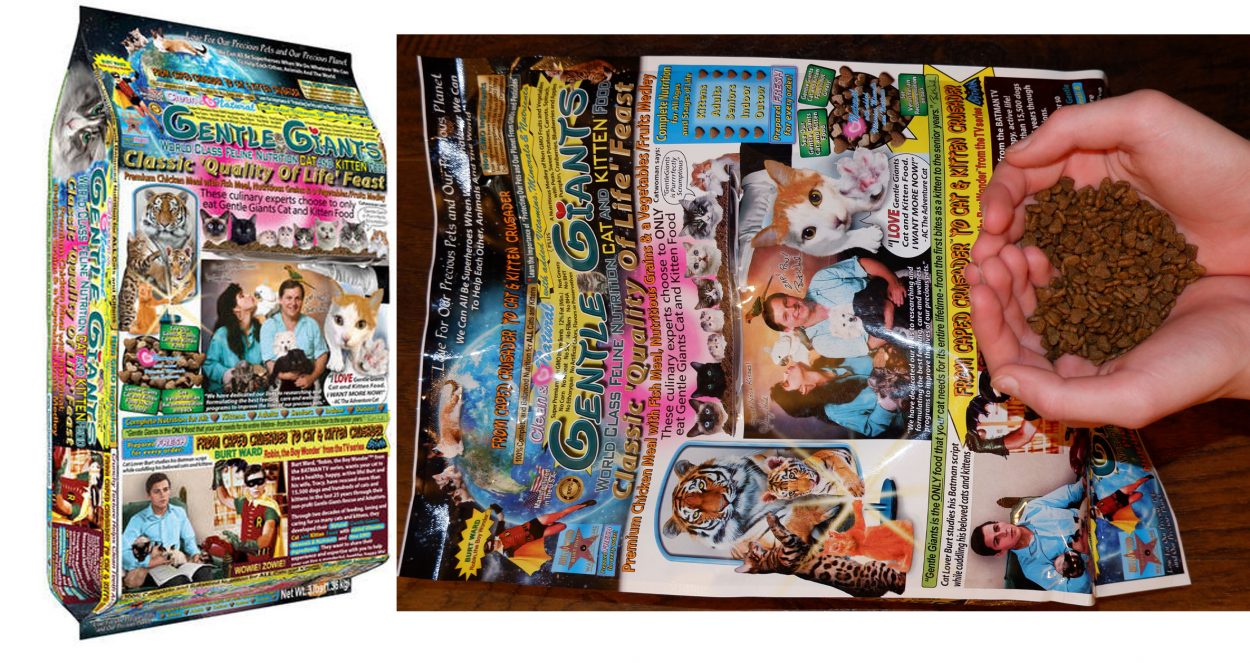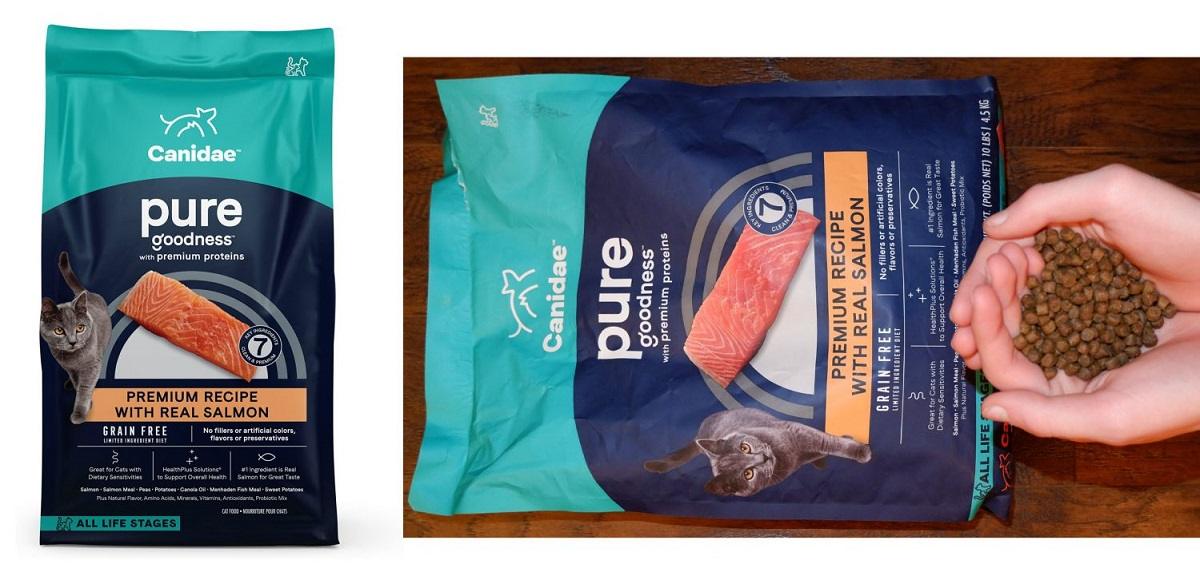Quality Cat Food Ingredients : What To Look For?
This page contains affiliate links. We may earn money or products from the companies mentioned in this post through our independently chosen links, which earn us a commission. Learn More

In a perfect world, all cat food ingredients would be created equal. Instead, cat owners are presented with the daunting task of sorting through labels on bags, boxes and cans of cat food.
Wading through the choices to find a cat food brand that is affordable, healthy and appealing to your pet is often discouraging. Fortunately, we have some advice to help you make educated food choices for your furry friend.
Cats Need Protein In Their Cat Food
Your cat’s food should always be rich in protein. This typically comes from meat, poultry or fish. Proteins are necessary for all aspects of growth and development. They are important in structural makeup and the immune system as well. In addition, protein is burned as calories and can be converted to and stored as fat.
Cat Food Should Include Taurine
Check your cat’s food for an amino acid called taurine. This particular amino acid is very important in the overall health of your cat. If a cat is taurine deficient, signs such as a heart condition (called dilated cardiomyopathy), retinal degeneration, reproductive failure, and abnormal kitten development can occur.
Cat’s will eat large amounts to supplement this particular amino acid. So, if you are buying cheap cat food that does not have the proper nutrients your cat could eat more than usual. Buy a nutrient rich cat food and your cat will eat less and while saving you money.
Fats Are Essential
Fats (and oils) provide the body insulation and protection for internal organs. Essential fatty acids must be provided in a cat’s diet because they cannot be synthesized in sufficient amounts.
Linoleic acid is an essential fatty acid for cats. Arachidonic acid, an omega-6 fatty acid, is also essential for cats for the maintenance of the skin and coat, kidney functions and for reproduction. Omega-6 and omega-3 fatty acids play a vital role in healing inflammation.
Avoid Cat Food Fillers
Many cat foods on the market today contain high amounts of fillers which are carb rich ingredients. If fillers, such as corn, cereal, soy, straw, citrus pulp, etc, are listed towards the top of the ingredients label, walk away.
These fillers are often added as pet food ingredients to help decrease the overall cost of the food. Remember, cats need animal meat to stay alive.
Vitamins
Vitamins are essential for metabolism regulation and normal growth and function. Usually found in food, some are synthesized within the cat’s body. They can be classified as either fat or water soluble.
Fat-soluble vitamins include A, D, E, and K. The water-soluble group includes C and the B complex. Generally, fat-soluble vitamins are stored in the body, while water-soluble ones pass through more quickly.
Water Is The Most Important Nutrient
While food may help meet some of your cat’s water needs, they also need to have fresh clean water available at all times. A deficiency of water can cause serious illness or even death.
Bad Cat Food Vs. Good Cat Food
Domestic cats love and need meat just like their cousins in the wild. This means you want to look for cat foods with a lot of meat for protein. Try to avoid types of cat food that contain more grain and less meat. The three types of grain you want to avoid are soy, wheat, and corn. Many cats are allergic to one or more of those ingredients.
Wet cat food contains more protein less grains and, actual meat products. Your cat might be fine eating just dry food but if he isn’t drinking enough water, dry food can lead to medical issues like urinary blockages. Wet and canned food will help him stay properly hydrated.
High-quality cat food brands list specific ingredients on their labels like turkey, chicken or rabbit. Lower quality cat food manufacturers, are often unclear or show a lot of fillers. They might say that their food contains meat, on the label, but they do not show what kind. This is why cat owners should always read the label and make sure the best ingredients are listed first.
Conclusion
Information shown on cat food labels can be helpful in deciding which food is best. When choosing a cat food, be sure to read the entire package, and carefully consider the percentage of nutrients (guaranteed analysis), ingredients and the nutrient levels after the moisture has been removed (dry matter basis). Researching and buying a quality cat food can help to ensure long and healthy life for your beloved pet.


